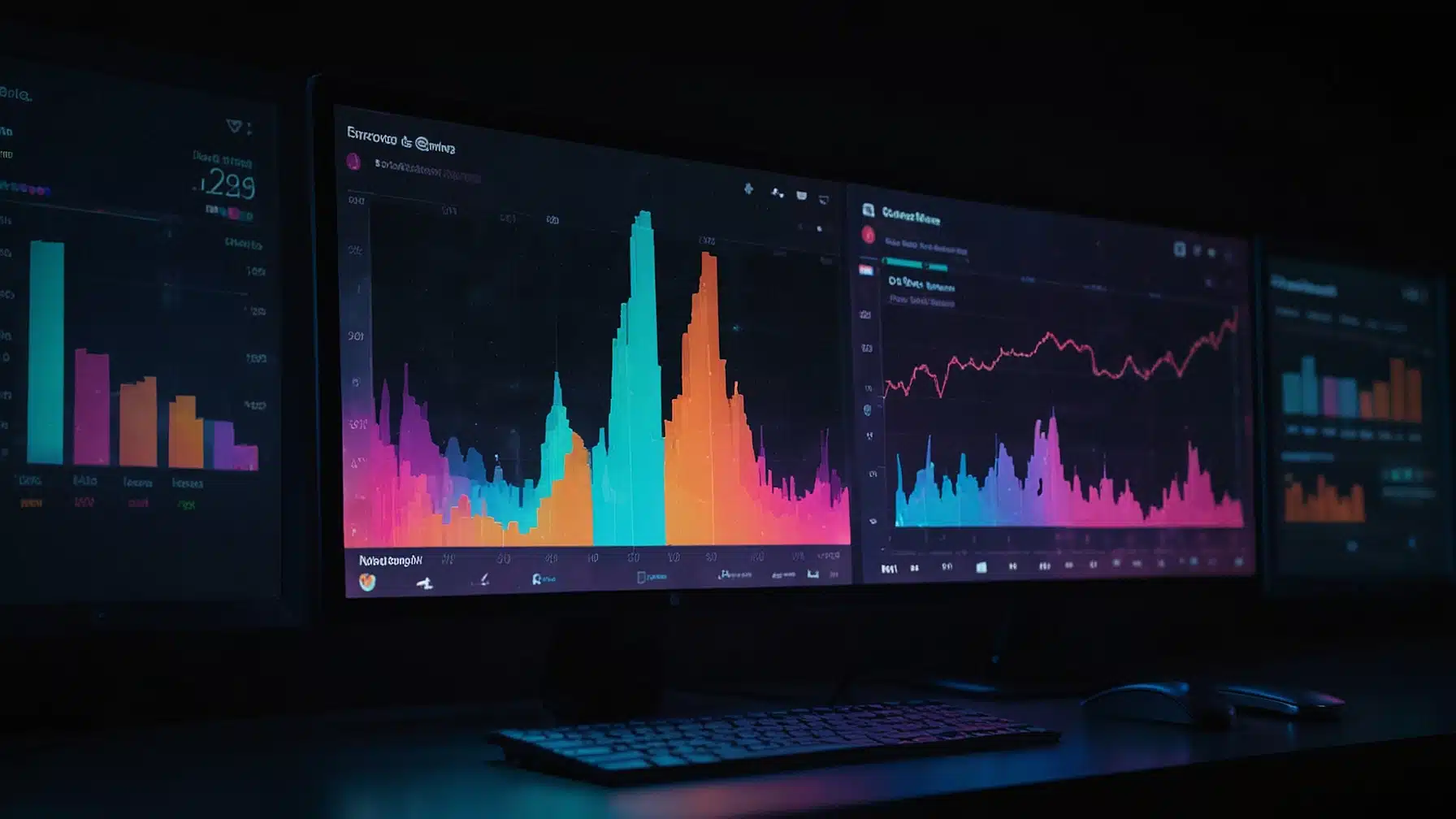Influencer marketing on YouTube has become an essential strategy for brands looking to reach a broad and engaged audience. It allows you to tap into the established trust and credibility that influencers have with their followers, making your marketing efforts more authentic and effective. By collaborating with YouTube creators, you can showcase your products or services in a way that feels natural and relatable to potential customers.
YouTube offers various ways to partner with influencers, such as unboxing videos, giveaways, and product reviews. These formats can significantly boost your brand’s visibility and help you connect with your target market. Choosing the right influencer for your brand is crucial, as they will represent your company to their dedicated followers.
To make the most out of YouTube influencer marketing, it’s important to set clear goals and measure your return on investment. This ensures that your campaigns not only reach a wide audience but also drive tangible results for your business. Leveraging the power of YouTube influencers can lead to increased brand awareness and higher engagement rates, ultimately contributing to your company’s success.
Understanding Influencer Marketing on YouTube
Influencer marketing on YouTube involves partnering with content creators who have established a strong presence on the platform. Different types of collaborations and influencers can be used to reach your target audience effectively.
The Rise of YouTube Influencers
YouTube has become a key platform for influencers due to its large user base and the ability to create engaging video content. Influencers on YouTube range from those with a few thousand followers to those with millions of subscribers. YouTube influencers create a wide variety of content, such as tutorials, reviews, vlogs, and more.
The presence of micro-influencers, macro-influencers, and mega-influencers contributes to its massive influence. Micro-influencers typically have 1,000 to 100,000 followers, macro-influencers have between 100,000 to 1 million followers, and mega-influencers have over 1 million followers. These groups attract different audience segments, making YouTube versatile for marketing.
Defining Influencer Marketing
Influencer marketing on YouTube involves brands collaborating with influencers to promote products or services. The goal is to leverage the influencer’s credibility and reach to influence purchasing decisions among their followers. Unlike traditional advertising, this strategy uses authentic content created by the influencers themselves.
Successful influencer marketing relies on finding influencers whose values align with your brand. This includes matching the influencer’s niche with your target market. For instance, a tech brand should collaborate with a tech influencer who can provide genuine reviews and demonstrations of their products.
Types of YouTube Influencer Collaborations
There are several ways to collaborate with YouTube influencers. Sponsored Content is when brands pay influencers to create videos featuring their products. Product Reviews involve influencers giving honest opinions about the products, which can build trust with viewers.
Giveaways are another popular type, where influencers host contests that require viewers to follow branded social media accounts or perform other actions. Unboxing Videos are effective for new product launches, showing the product’s packaging and first impressions.
Vlogs featuring Lifestyle Integration allow influencers to incorporate products naturally into their daily lives, giving followers a more relatable look at the brand. Each collaboration type can be tailored to fit the brand’s goals and the influencer’s typical content style.
Strategizing Your Influencer Marketing Campaign
To create an effective influencer marketing campaign on YouTube, it’s essential to set clear objectives, identify your target audience, choose the right influencers, and allocate your budget wisely.
Setting Clear Objectives
Start by defining what you want to achieve with your influencer marketing campaign. Your goals could include increasing brand awareness, driving traffic to your website, or boosting sales. Clear objectives help in tracking progress and determining the success of your campaign.
Use measurable Key Performance Indicators (KPIs) such as views, click-through rates, and conversions to gauge effectiveness. These metrics will help you adjust your strategies if needed. Regularly reviewing your KPIs ensures that your campaign remains on track and delivers the desired ROI.
Identifying the Target Audience
Knowing your target audience is crucial for a successful campaign. Analyze demographic information such as age, gender, and location. Study their interests, preferences, and online behavior to tailor your content accordingly.
Competitor analysis can offer insights into what works well in your niche. Look at who your competitors are targeting and how they engage with their audience. This research will help you create content that resonates and maintains high engagement rates.
Choosing the Right Influencers
Finding the right influencers involves more than just looking at follower counts. Evaluate their engagement rates, the quality of their content, and their alignment with your brand values. An influencer who genuinely loves your product will promote it more effectively.
Reach out to influencers who have a genuine connection with their audience. Authenticity and trust are key to a successful collaboration. Influencers with engaged followers are more likely to drive meaningful interactions and results for your campaign.
Allocating Your Budget
Determine your budget based on your campaign goals and the scope of your strategy. Allocate funds for influencer fees, production costs, and any additional expenses such as ads or promotions.
It’s essential to balance your budget between high-profile influencers and micro-influencers. Micro-influencers often have higher engagement rates and can be more cost-effective. Ensure you have a clear understanding of what each influencer will deliver in return for their compensation to maximize your ROI.
By focusing on these key areas, you can create a well-rounded influencer marketing campaign that aligns with your brand and achieves your marketing goals.
Creating Compelling Content
To capture your audience’s attention, you need to create engaging, authentic, and trustworthy content. By collaborating with influencers and managing the creative process, you can ensure your content resonates with viewers and drives engagement.
Collaborative Content Formats
Working closely with influencers, you can explore various content formats that appeal to their followers. Common formats include unboxing videos, where influencers open and review products, and tutorials or how-to videos that demonstrate the product’s use.
Other effective formats are product reviews, where influencers give honest feedback, and giveaways or contests that actively involve the audience. These collaborative formats help increase engagement rates and build trust with viewers, making them more likely to purchase your products.
Ensuring Authenticity and Trust
Authenticity is crucial in influencer marketing. When influencers share genuine opinions about your product, it builds trust with their audience. Encourage content creators to share their real experiences and be honest in their reviews.
Avoid scripts that make the promotion seem forced. Instead, allow influencers to incorporate your product naturally into their content, such as through behind-the-scenes content or casual mentions in their usual routine. Authentic content resonates more with viewers, enhancing trust and increasing your brand’s credibility.
Managing Creative Control
While giving influencers freedom is vital, maintaining some creative control ensures your brand is accurately represented. Provide guidelines that outline your brand’s values, key messages, and any specific product details to highlight.
It’s essential to balance freedom and control. Allow the influencer’s unique style to shine while ensuring the content aligns with your brand goals. For instance, in an unboxing video, ensure the influencer highlights aspects like packaging and usability without sounding overly scripted.
Regular communication and feedback throughout the project help maintain quality and consistency, making the content more engaging and effective in reaching your target audience.
Measuring and Analyzing Campaign Performance
Understanding how your influencer marketing campaigns are performing is key to making data-driven decisions. You want to evaluate metrics such as conversion rates, engagement, and brand awareness to understand what works and what needs improvement.
Understanding Key Performance Indicators
Key Performance Indicators (KPIs) help you measure the success of your campaigns. Important KPIs include:
- Engagement Rate: This measures likes, comments, and shares on your posts. A higher engagement rate indicates a more active and interested audience.
- Conversion Rate: This assesses how many viewers take action, such as clicking a link or making a purchase. It shows the effectiveness of your call-to-action and the overall influence of the campaign.
- Brand Awareness: Track views, mentions, and search engine queries related to your brand. An increase in these metrics indicates a higher recognition among viewers.
These KPIs offer insights into how well your content is performing and where you need to focus your efforts.
Leveraging Analytics for Insights
Using analytics tools can provide deeper insights into your campaign performance. Platforms like Sprout Social offer features like:
- AI-powered content grading: Automatically evaluate the quality of your content and its impact on engagement and conversions.
- Performance Metrics per Post: Understand how individual videos perform, giving you the ability to tweak content for better results.
- Trend Analysis: Identify ongoing trends in your niche, helping you stay relevant.
These tools integrate with other systems, making it easier to collect and analyze data across different platforms.
Adjusting Strategies Based on Feedback
Once you have measured your campaign’s performance, it’s time to adjust strategies based on the feedback:
- Analyze Feedback: Look at the comments and messages you receive. This feedback can provide valuable insights into what your audience likes or dislikes.
- Iterate and Improve: Use the KPIs and analytics to make data-driven decisions. If a certain type of content receives high engagement, create more of it.
- Tweak Campaigns: Modify aspects of your campaign, such as posting times, content style, or call-to-actions, based on the collected data.
By continually refining your approach, you can improve your YouTube marketing efforts, drive better engagement, and increase conversions.









